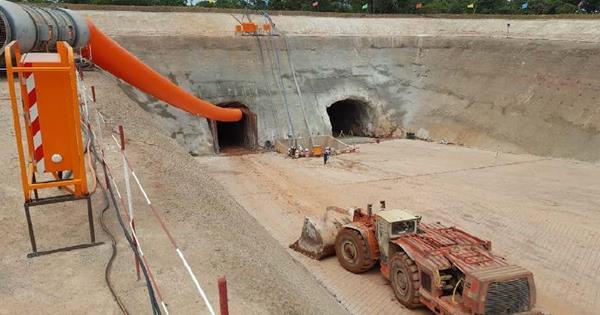Ivanhoe Mines has reduced its 2025 copper production forecast for the Kamoa-Kakula complex in the Democratic Republic of Congo, after a seismic event on May 18 led to significant underground flooding and a temporary halt in mining operations at the Kakula mine.
The flooding triggered an immediate shutdown and prompted a comprehensive geotechnical review. Ivanhoe has since adjusted its short-term mining strategy, with operations resuming on the western side of the Kakula mine over the past weekend. The eastern section—closer to the affected zones—will remain offline until dewatering begins in August.
Production in 2025 is now expected to fall between 370,000 and 420,000 tonnes of copper, representing a 28% reduction at the midpoint from previous guidance. The company has also withdrawn its 2026 copper production target of 600,000 tonnes, citing the need to reassess risks tied to seismic activity and structural stress.
Despite the setback, Ivanhoe reports that the Phase 3 concentrator near the Kamoa mines continues to exceed expectations, while Phases 1 and 2 are currently operating at about 50% capacity using surface stockpiles and ore from Kamoa 1 and Kansoko. Full throughput is expected in the second half of 2025.
Meanwhile, the construction of the Kamoa-Kakula smelter—set to be the largest single-line blister copper facility in Africa—is progressing as planned. Cold commissioning is scheduled for September, with initial anode copper production expected by October 2025.
Ivanhoe’s Executive Co-Chairperson, Robert Friedland, praised the team’s rapid response:
“We deeply appreciate our team’s swift action to stabilize water levels and resume mining safely. Their efforts have made it possible to access new high-grade zones despite the disruption.”
CEO Marna Cloete highlighted the company’s safety record, commending staff and contractors for restoring operations without any lost-time injuries.
Preliminary investigations by Beck Engineering (Australia) and Open House Management Solutions (South Africa) suggest that the seismic event was caused by stress redistribution onto regional support pillars on the eastern side of the mine. The incident likely stemmed from cascading ore yields in areas where a large volume had already been mined. Although mined-out stopes were backfilled with cemented tailings, the material was insufficient to fully stabilize underground pressure.
In response, Ivanhoe has revised its mining design to include wider pillars and altered extraction sequences, alongside the installation of advanced geotechnical monitoring systems to enhance early warning capabilities.
Access to the flooded zones remains restricted until dewatering is complete. The company has also temporarily paused work on its Integrated Development Plan (IDP) pending a full geotechnical reassessment. Updates will be issued once technical teams finalize their review.
Despite the current challenges, Ivanhoe remains optimistic about the future of Kamoa-Kakula.
“Kamoa-Kakula remains a world-class, Tier 1 operation with decades of production ahead,” said Friedland.















